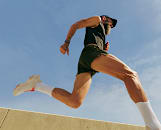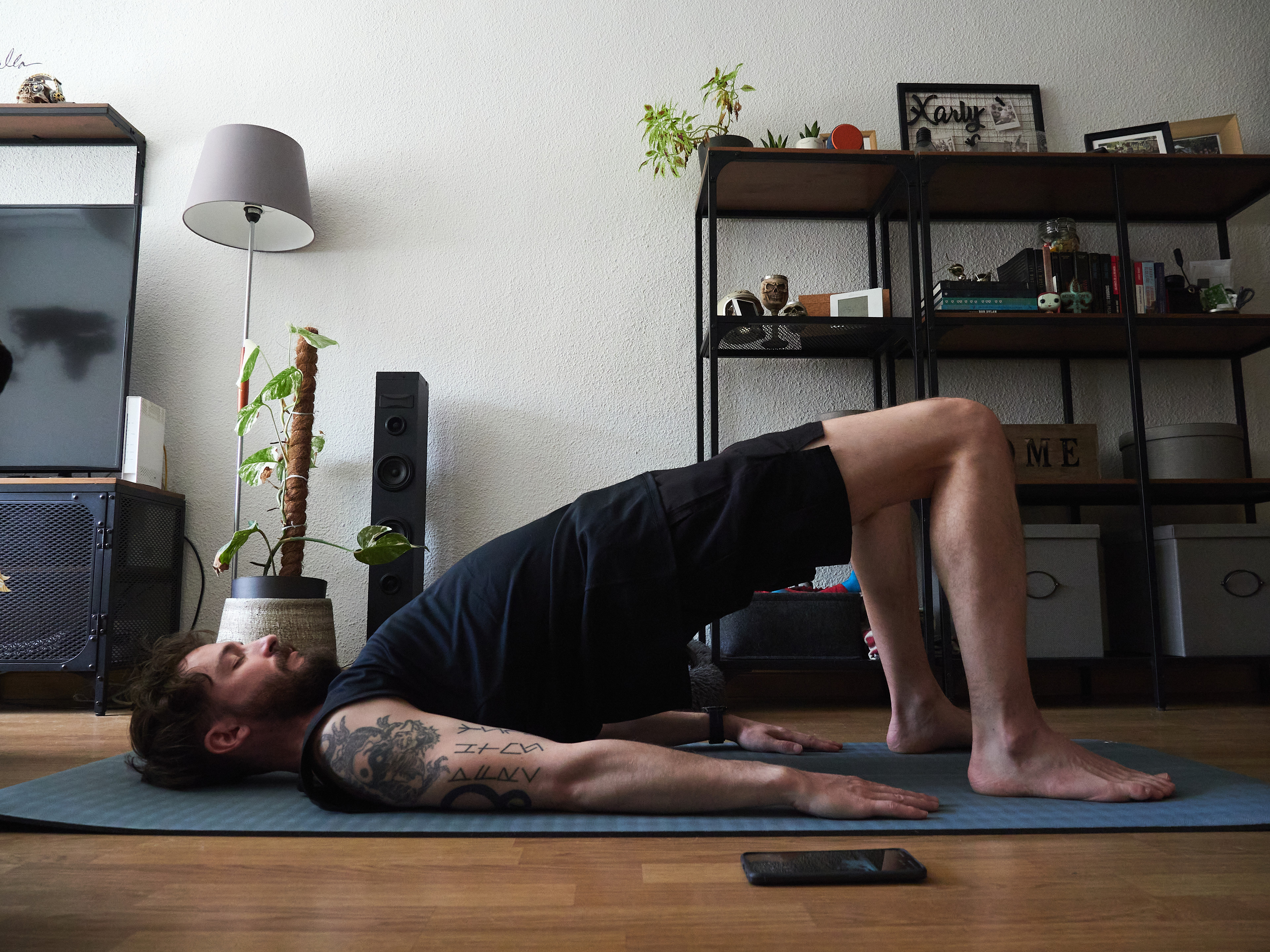
Carlos Ruben Hernandez Blasco via Getty Images
Why Yoga Is So Great for Core Strength—and 10 Poses That Do the Trick
Find your center—physically and metaphorically.
By Lauren Mazzo•
The Importance of Having a Strong Core
How Yoga Can Improve Your Core Strength
10 Best Yoga Poses for Core Strength
Tips to Keep In Mind When Doing Yoga for Core Strength
There are many reasons why you might show up to a yoga practice, whether you’re looking to quiet your mind, connect with your breath, de-stress, get a good stretch, or build some strength. The latter is one area where yoga excels, particularly when it comes to your core.
Discover more ways to reach your goals with Peloton
Research consistently shows the benefits of yoga for core strength and stability, both of which come in handy on the mat, in your daily life, and as you tackle other types of workouts. “If you think about the functional aspect of training, yoga is, in my opinion, one of the most beneficial, safest, and well-rounded workouts you can do for your core,” says Peloton instructor Nico Sarani.
Many yoga poses tap into these important muscles, but certain ones reign supreme when it comes to activating your abs (and all the other muscles that make up your core). Read ahead to learn everything you need to know about using yoga for core strength, including which poses should take priority in your practice if that’s your goal.
The Importance of Having a Strong Core
You may have heard it before, but your core is about so much more than abs or aesthetics. It includes all the muscles surrounding your trunk that help to move, support, and stabilize your spine, according to the American Council on Exercise (ACE)—and in case it isn’t obvious, that’s a pretty important job.
Your core is comprised of your internal and external obliques (which wrap around the sides of your trunk), the rectus abdominis (the “six pack” muscles on the front of your stomach), and the transverse abdominis (the deepest, corset-like layer of your core), Nico says. Your back muscles, and muscles in your pelvis and hips also belong to the core, she adds.
Together, these muscles protect your internal organs and spine and act as a foundation for all movements, according to the National Academy of Sports Medicine (NASM). Your core stabilizes your trunk to help you sit or stand upright, prevents injury when you lift something heavy, and helps transfer force and speed between your upper and lower body when, for example, throwing a ball or steering your skis down a mountain. Research confirms that a strong core helps stabilize your pelvis while you walk and run, improves dynamic balance and stability, and helps prevent injury. Namely, “strengthening the core supports the lower back, and may therefore prevent or help with back pain,” Nico says.
This is all to say, core strength and stability are incredibly important, allowing you to move through your daily life and power through workouts and sports safely and efficiently.

Peloton App
Access thousands of classes with no equipment needed.
How Yoga Can Improve Your Core Strength
Yoga is inherently a fantastic workout for building core strength. “Through a combination of different postures, movements, and static holds, most yoga classes will usually use all the core muscles—the deep layers, the more superficial ones, the larger muscle groups, and the smaller ones,” Nico says.
The practice asks you to move in all directions, supporting your own body weight in different shapes, and working muscles in your whole body, including 360 degrees of your core. Think about the way your core is tasked with holding your body up in positions like Triangle Pose (Trikonasana), Chaturanga Dandasana in Sun Salutations, or Chair Pose (Utkatasana). These poses are unlike traditional ab moves like crunches, for example, which only work the muscles on the front of your stomach.
Yoga’s slower pace also helps ensure you’re engaging your core properly. “Through slower movement patterns than in most other disciplines and thorough application of the breath, yoga teaches us to properly engage those muscles and strengthen them in a gentle but efficient way, while also training our mind-body connection,” Nico continues. “What’s more, we focus on proper alignment and good posture in yoga, and building good core strength goes hand in hand with that.”
Research backs up the power of yoga for core strength, suggesting that it can make a real difference even when practiced just once a week. A 2021 study published in Frontiers in Public Health, for example, recruited female college students to do a beginner-level, 1.5-hour-long Hatha yoga class once a week for 10 weeks. The researchers found that this dose of yoga was enough to result in significant positive changes in balance, flexibility, and core muscle strength.
In addition to building strength, yoga also improves mobility, which plays a key role in maintaining a functional core. “Yoga practice doesn’t just strengthen the core muscles but also supports their development through gentle stretching,” Nico says. A 2017 research review published in the International Journal of Yoga, for example, shows that the increased hip and spinal flexibility afforded by yoga enhances the dynamic control of core stabilizing muscles and helps reduce lower back pain.
Compared to other workout types, the core connection in yoga goes a bit deeper—literally and theoretically. “Energetically speaking, in yoga, we see the core as our center,” Nico explains. “When we focus on that area of our body, be it through postures, movements, or mental focus, it’s also supposed to help us establish inner strength and a strong will, and sharpen our decision-making powers.”
Try a Core-Focused Yoga Class on the Peloton App
10 Best Yoga Poses for Core Strength
As Nico notes above, core work is a central part of yoga, and those muscles are sure to feel the benefit whether you’re specifically trying to work them or not. However, if you’re hoping to build core strength with yoga, these 10 poses—all favorites of Nico’s—are sure to do the trick. If you’re looking for a guided yoga workout, check out the Focus Flow: Core and Yoga Conditioning: Core classes on the Peloton App.
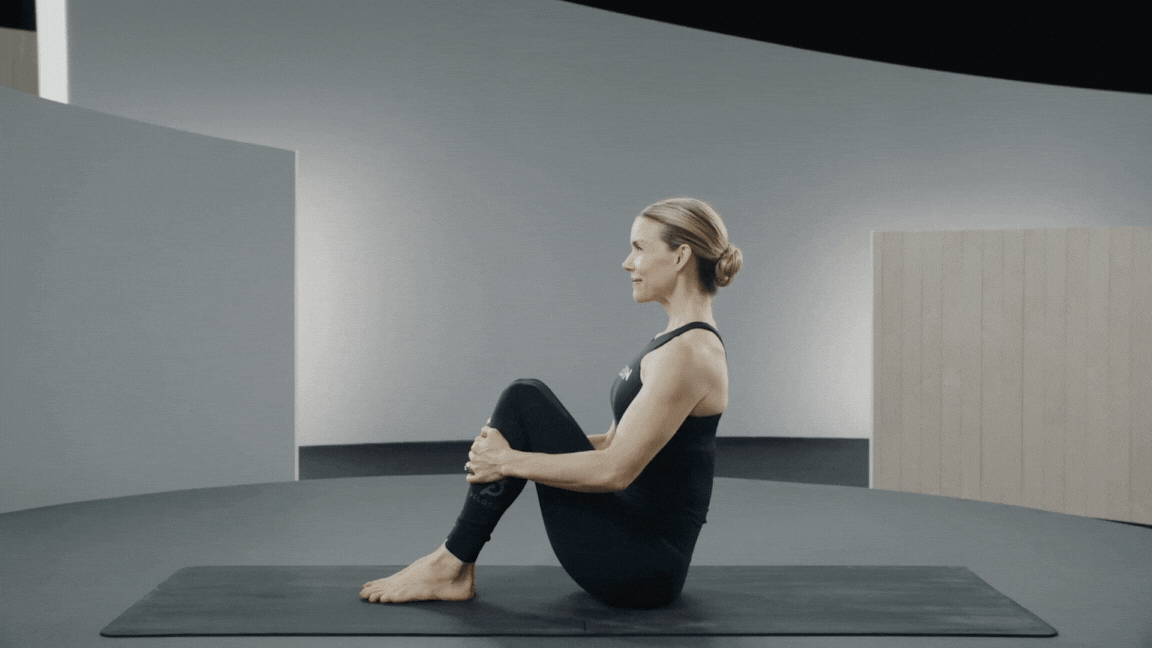
Boat Pose (Paripurna Navasana)
Boat Pose looks like a classic core move, and you’re sure to feel it in your abs. If it’s too difficult to lift your feet, keep them on the floor and focus on core engagement.
Sit on a mat with your knees bent and feet on the floor in front of you, spine straight and your hands resting on the ground next to your hips.
Lean back slightly as you lift your feet up, keeping your knees bent as you balance on your sitting bones. Try to maintain a straight spine and keep your collarbone lifted, Nico says.
Once you feel stable, reach your arms forward with your palms facing each other. Draw your shoulders down and back, away from your ears. If possible, straighten your legs, maintaining the angle in your hips. Continue to engage your core by pulling your belly button up and in toward your spine, keeping your breath steady.
Hold for 3 to 5 breaths.
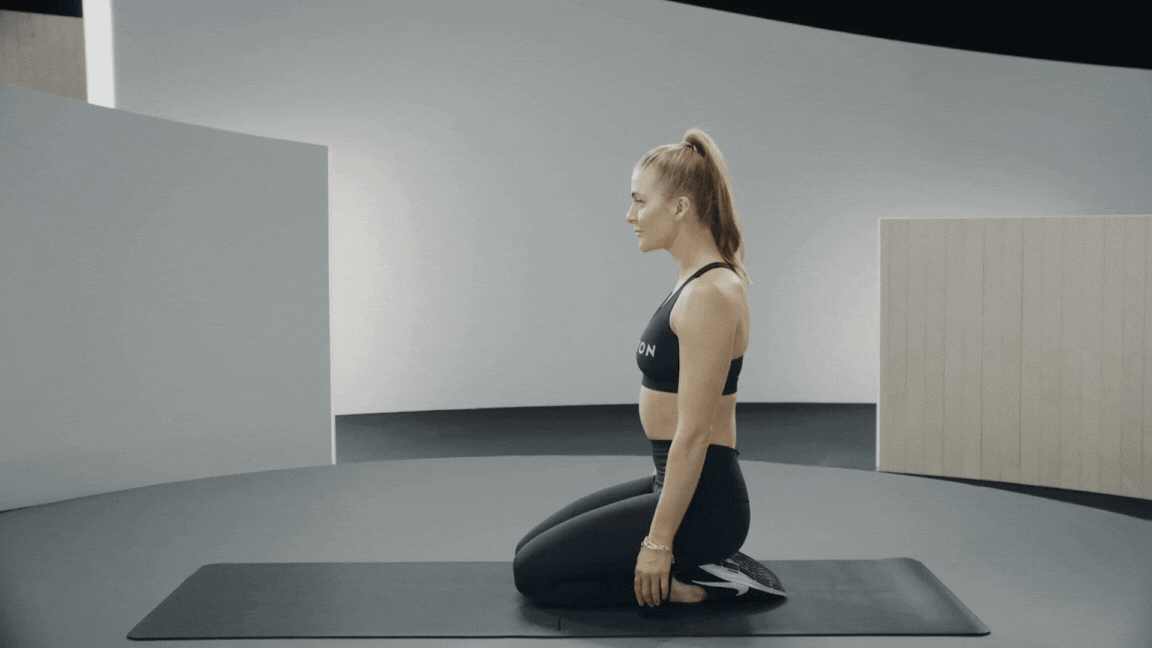
Plank Pose (Phalakasana)
Nico’s tip for a productive Plank Pose? “No spaghetti,” she says. “Hug your tailbone under, engage your core, and push your palms evenly into the ground.” To modify, lower your knees to the floor or take pressure off your wrists by lowering to a forearm plank.
Start in a tabletop position, with your knees under your hips and your hands flat on the floor directly underneath your shoulders.
Lift your knees off the floor and extend your legs behind you, balancing on your toes. Your body should be in one straight line from head to heels. Think about drawing your shoulders back and down and lifting out of your shoulder girdle, pushing away from the floor, without rounding your spine.
Hold for 3 to 5 breaths.

Side Plank Pose (Vasisthasana)
Side planks strengthen your obliques as well as your shoulders and the outside of your hips. To make the most of this yoga pose for your core, think about hugging your lower ribs in, Nico says. You can modify by lowering your bottom knee or take pressure off your wrist by lowering to your forearm.
Lie on your right side with your legs straight and your left foot stacked on top of your right foot. Place your right palm on the floor underneath your right shoulder.
Brace your core and glutes and press up into a side plank, balancing on the outside of your right foot and your right palm or forearm. Extend your left arm toward the ceiling.
Hold for 3 to 5 breaths, then repeat on the other side.

Floating Tabletop (Bharmanasana)
The key to core engagement with this yoga pose is maintaining a straight spine, Nico says. Don’t allow your back to arch or round while you hover your knees off the floor.
Start in tabletop position with your knees directly under your hips and your palms on the floor under your shoulders. Tuck your toes and engage your core, making sure your spine is in a neutral position, including your neck.
Press into your palms and toes to lift your knees so they’re hovering just off the floor.
Hold for 3 to 5 breaths.
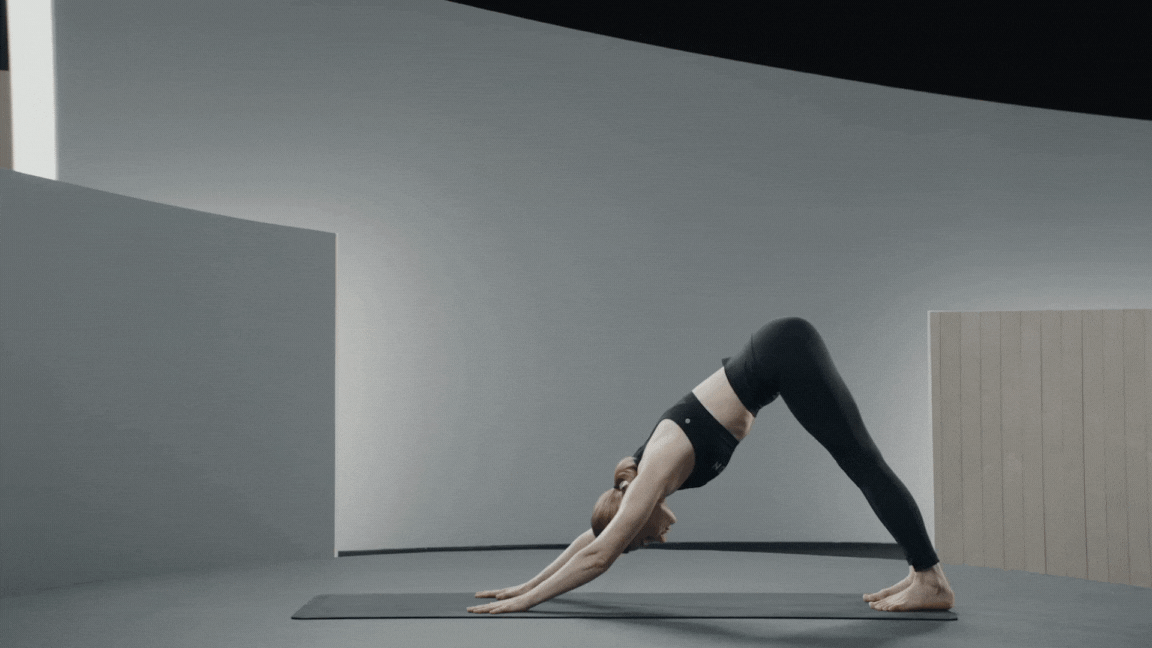
Warrior 3 Pose (Virabhadrasana 3)
Warrior 3 is a classic balance pose in yoga, and a great core workout to boot. For help balancing, “keep your hip bones parallel and think about drawing the inside of the lifted leg up,” Nico says. As a modification, place a pair of yoga blocks on the ground directly in front of you at the tallest height.
Start standing with your feet hip-width distance apart and hands by your sides.
Maintaining a slight bend in your right leg, extend your left leg up and back so that it’s at hip height. Bring your chest forward so your torso is parallel to the floor. Keep your left foot flexed and all five toes pointed at the ground, with your hips square. Extend both arms forward so your biceps are by your ears.
To maintain your balance, think about squeezing your inner thighs together, tucking your hips and pelvis toward your center, and drawing your lower abs toward your spine.
Hold for 3 to 5 breaths, then repeat on the other side.
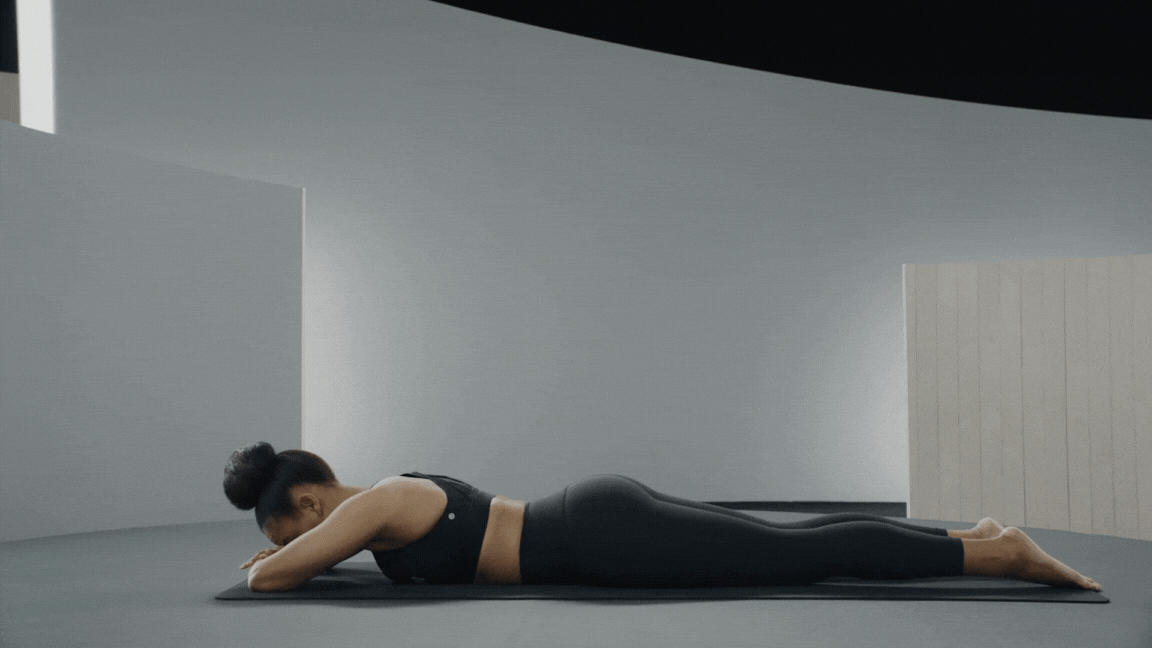
Cobra (Bhujangasana)
Cobra Pose strengthens your lower back, a key but often overlooked part of the core musculature. “The back is part of the core muscles (specifically the lower back), so don’t neglect them!” Nico says. “Push your heart forward, gently hug the tailbone under, and draw your shoulders away from your ears,” Nico says.
Start by lying face-down on the floor with your legs long and toes untucked, feet hip-width distance apart. Place your hands on the ground under your shoulders with your elbows tight next to your ribs.
Inhale to squeeze your shoulder blades together and press into the mat through your hands, lifting your chest off the ground. Reach your heart forward and engage your core, pulling your belly button gently in toward your spine. Draw your shoulders away from your ears by gliding them back and down, and press into the tops of your feet into the ground.
Hold for 3 to 5 breaths.
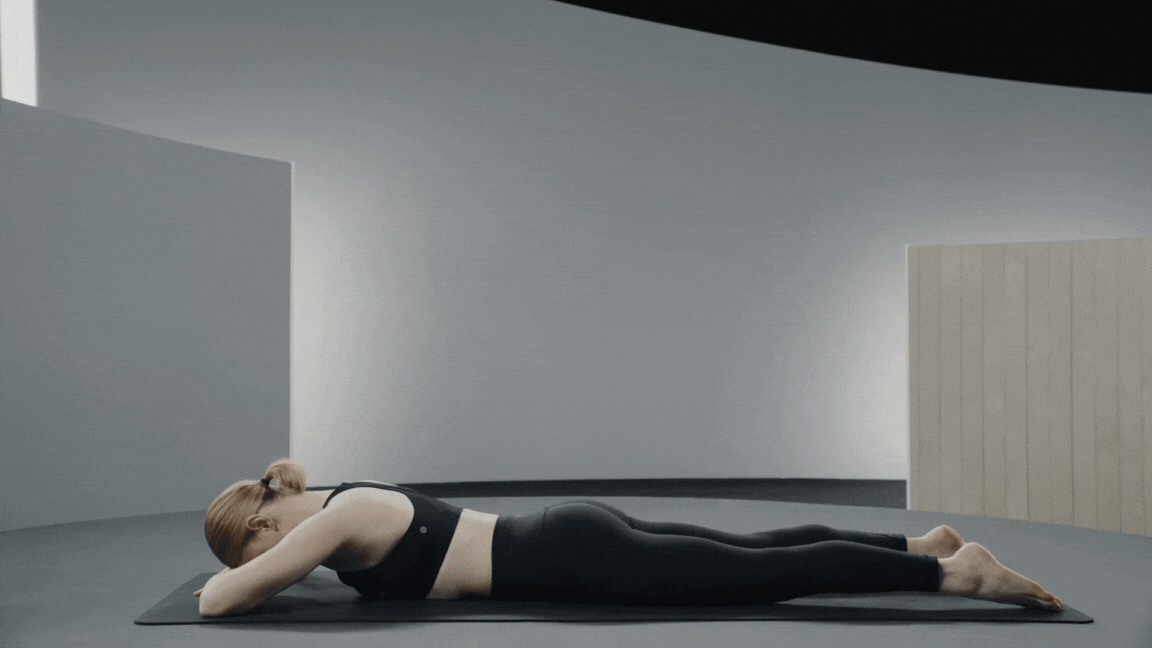
Locust (Salabhasana)
Like Cobra, Locust is another prone, backbending pose that helps strengthen the core and lower back.
Start by lying face-down on the floor with your arms and legs long, toes untucked, feet hip-width distance apart, and arms by your sides. Allow your forehead to rest on the floor with your neck long.
Press your pubic bone into the floor, and inhale to slowly peel your head, chest, shoulders, arms, and legs off the floor. Keep your neck long and your eyes gazing at the floor about a foot in front of you. Think about lengthening from the crown of your head to the balls of your feet, drawing your shoulder blades back and down and extending through your fingertips. (Optional: Reach your hand towards each other so they can clasp together behind your back.)
Hold for 3 to 5 breaths.
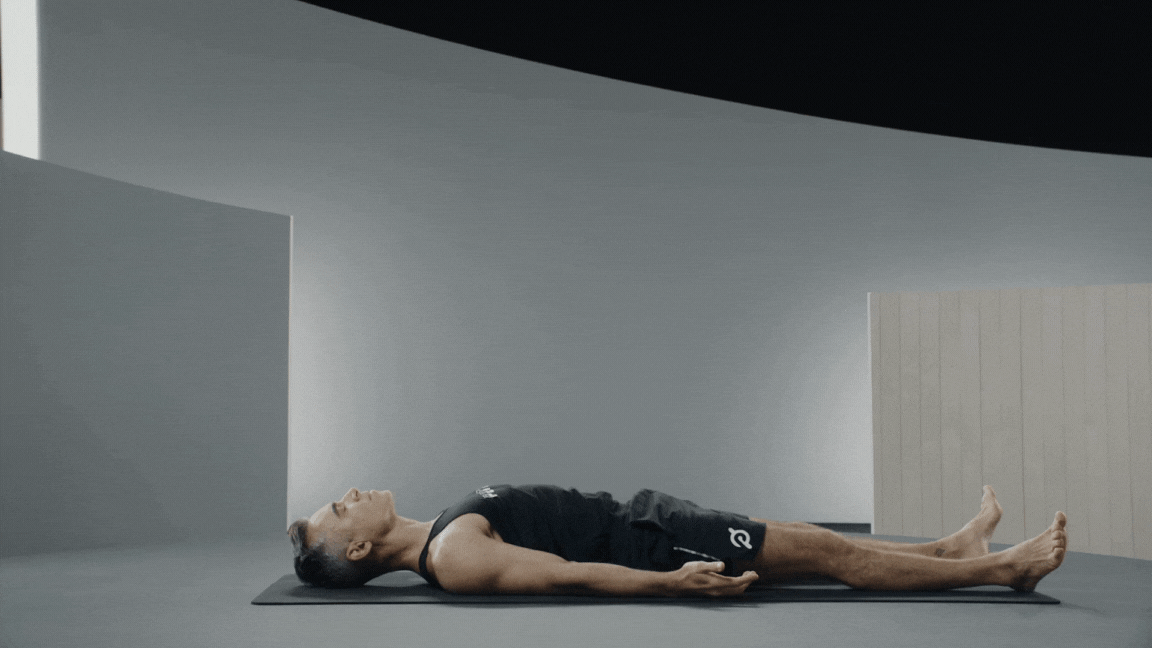
Bridge Pose
Bridge Pose strengthens your lower back, hips, and pelvis, Nico says. You can practice this pose with more core and glute engagement in mind (by stopping your hips from lifting further, your body forms a straight diagonal line) or turn it into more of a backbend by arching your back and opening your ribs.
Lie face-up with your knees bent and feet flat on the floor, about hip-width apart. Place your arms at your sides with your palms on the mat.
Inhale and, while gently tucking your tailbone under, press into your feet to lift your hips off the floor. Pause when your body forms a straight line, from shoulders to heels.
If you’d like more of a backbend, you can continue lifting your hips, opening your ribs, and reach your hands underneath your body, rolling your shoulders open to try to clasp them together.
No matter which version you take, keep your feet and knees parallel and your neck neutral, with your gaze on the ceiling.
Hold for 5 breaths.
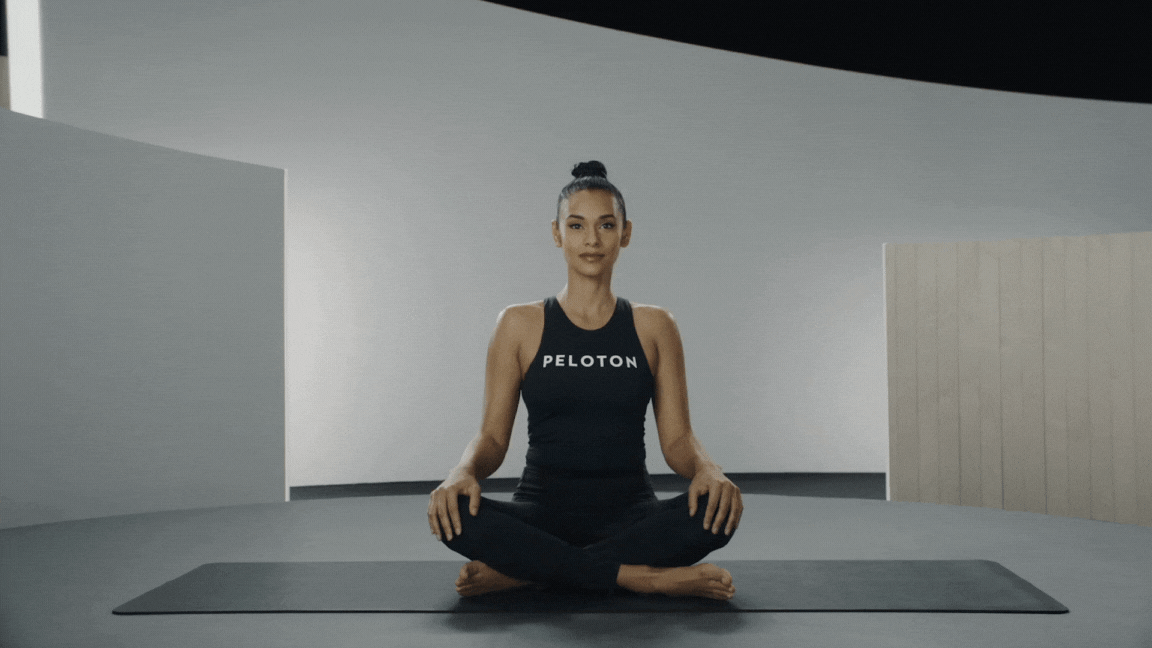
Easy Seated Twist Pose
All yoga twists are great for activating and working the core muscles as well as massaging the internal organs, Nico says. Just remember to always twist deeper on the exhale, she notes. Seated Spinal Twist is a beginner-friendly active twist that will help you tap into the oblique muscles.
Sit cross-legged on the floor with each foot under the opposite knee.
Place your right hand on your left knee, and place your left hand on the floor behind your left hip. Lengthen your spine on an inhale, then twist to the left on an exhale, engaging your core by gently pulling your belly button toward your spine.
Repeat for 3 breaths, then gently untwist and repeat on the other side.
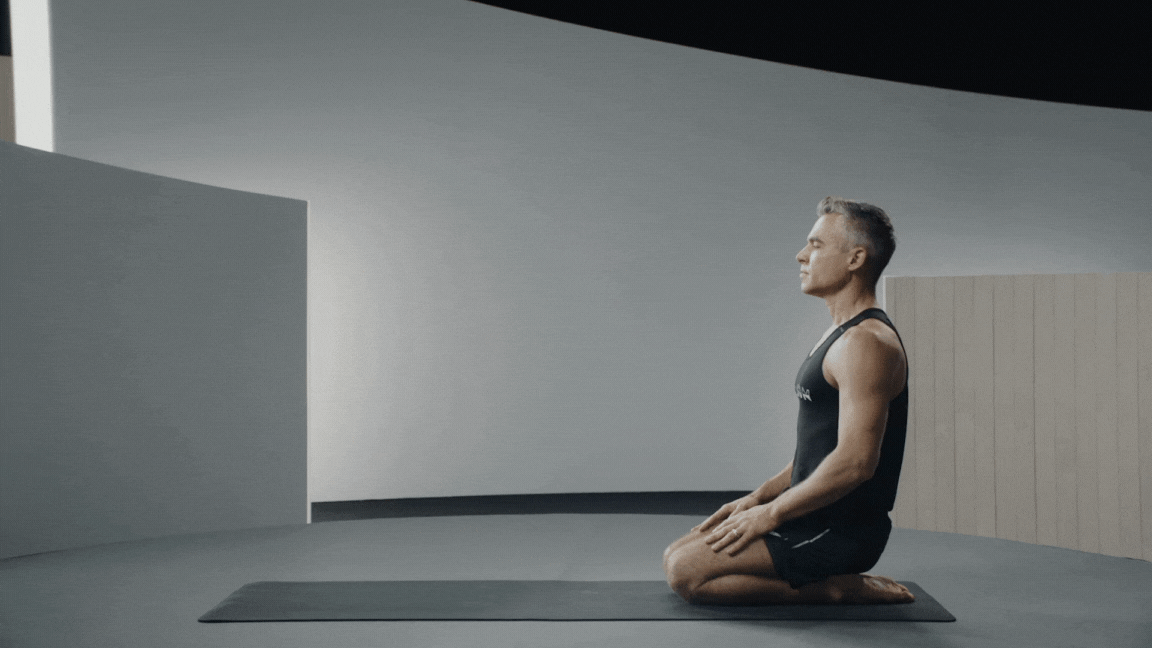
Crow Pose
All yoga arm balances require core strength and therefore work your center, Nico says. These asanas, including Crow Pose, are for more advanced students who have already built proficient core strength, she adds.
Start in Yoga Squat or Garland Pose (Malasana) with your knees wide and your feet close together. Reach your arms and torso forward, placing your palms on the floor in front of you, shoulder-width distance apart. Spread your fingers wide to grip the mat.
Shift your weight forward into your hands, coming onto the balls of your feet, and rest your knees on your upper arms as high up (or as close to your armpits) as they can go. Keep your neck long and your gaze on the floor just in front of your hands.
Keep shifting your weight into your hands until your feet become light. Lift them up one at a time, drawing your heels towards your glutes.
To engage your core, think about rounding your back, drawing your belly button in toward your spine, and squeezing your elbows with your knees. Keep your elbows bent or slowly begin to straighten your arms.
Hold for 2 to 5 breaths.
Tips to Keep In Mind When Doing Yoga for Core Strength
There’s more to building core strength with yoga than hanging out in Boat Pose or Plank for the better part of a yoga class. Like with any other workout, consistency is key to seeing results. “A strong core doesn’t appear overnight,” Nico says. “Continuous practice is necessary to see results.”
Another pro tip from Nico: Don’t forget your breath. The diaphragm—the large, dome-shaped muscle under your lungs, which helps power breathing—is the upper border of your core, which inextricably links your breath to your core muscle engagement. In yoga, your breath is literally supportive: “Mindful exhales stabilize the core in any given pose,” Nico says. Consider practicing specific yoga breathing exercises that will help you deepen the connection between your breath and core.
Finally, remember what else you’re gaining from a yoga practice. There’s nothing wrong with having a goal of building a strong core and using yoga to get there. Just keep in mind all the other things you can gain from consistently hitting the mat.
This content is for informational and educational purposes only and does not constitute individualized advice. It is not intended to replace professional medical evaluation, diagnosis, or treatment. Seek the advice of your physician for questions you may have regarding your health or a medical condition. If you are having a medical emergency, call your physician or 911 immediately.
Want to strengthen your yoga practice?
We can help. Enter your email to get articles, instructor tips, and updates from Peloton sent to your inbox.
By providing your email address, you agree to receive marketing communications from Peloton.
For more about how we use your information, see our Privacy Policy.

